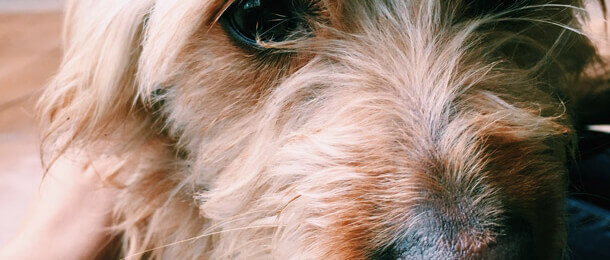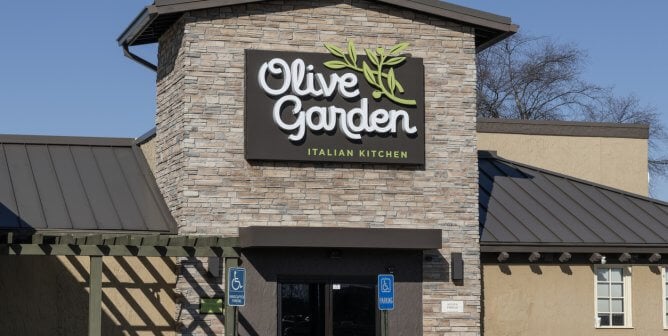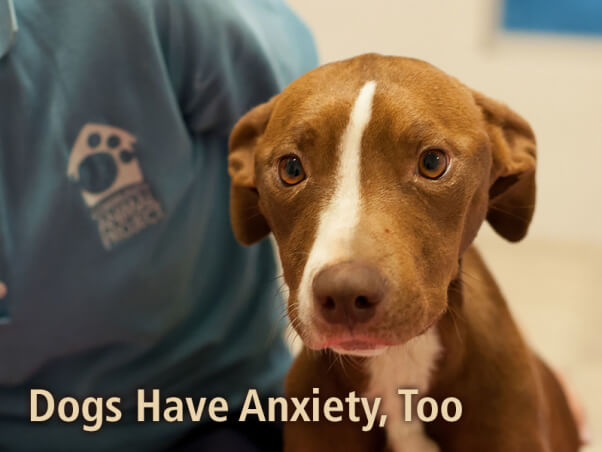
A version of this article appeared at peta2.com.
I know what you’re thinking: “What do dogs have to be anxious about?” Well, let me tell you, I wondered the same thing. Before I adopted my perfect angel, Jovie, from the shelter, I thought that all it would take to make her happy was food, exercise, and lots of affection.
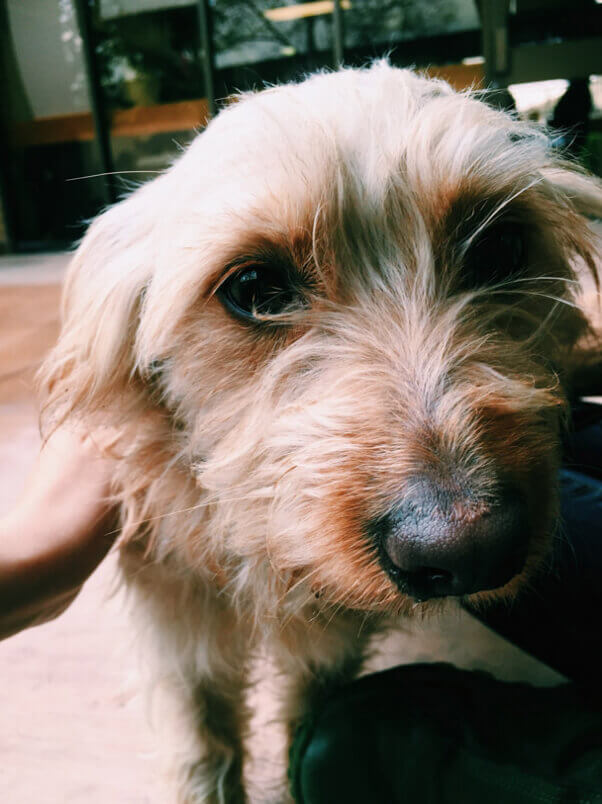
I was wrong. Because Jovie was found as a 2-year-old stray, I’ll never know what her life was like before I adopted her. Often, adult dogs in shelters have been abandoned, neglected, and even abused and are desperate for a sense of security. Imagine if you were passed around from one guardian to another for years and then ended up at a noisy animal shelter for weeks.
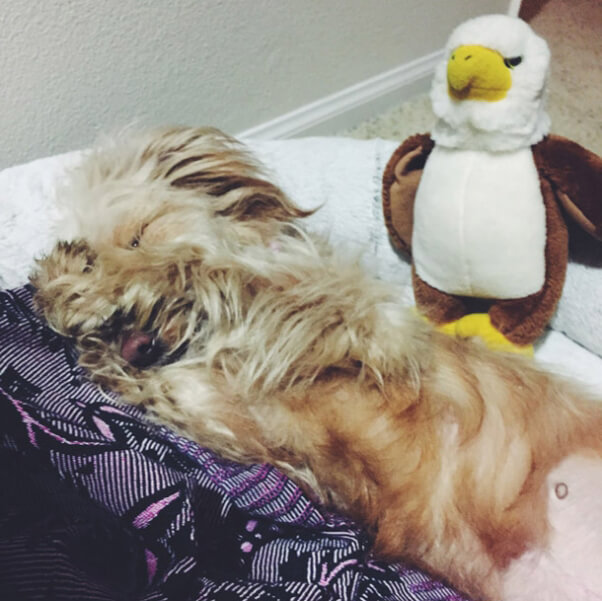
Adopting a dog is a HUGE responsibility. You’re making a long-term commitment to protect and care for this animal—for life. The bond is real, and breaking it just isn’t an option. (By the way, buying an animal from a pet store or a breeder isn’t an option, either, because it takes the chance for a home away from a dog waiting in an animal shelter.)
So you’ve decided that you’re ready to adopt a dog. How will you be able to tell if your new pal has separation anxiety? Here are some common signs to look for:
Eliminating in the house
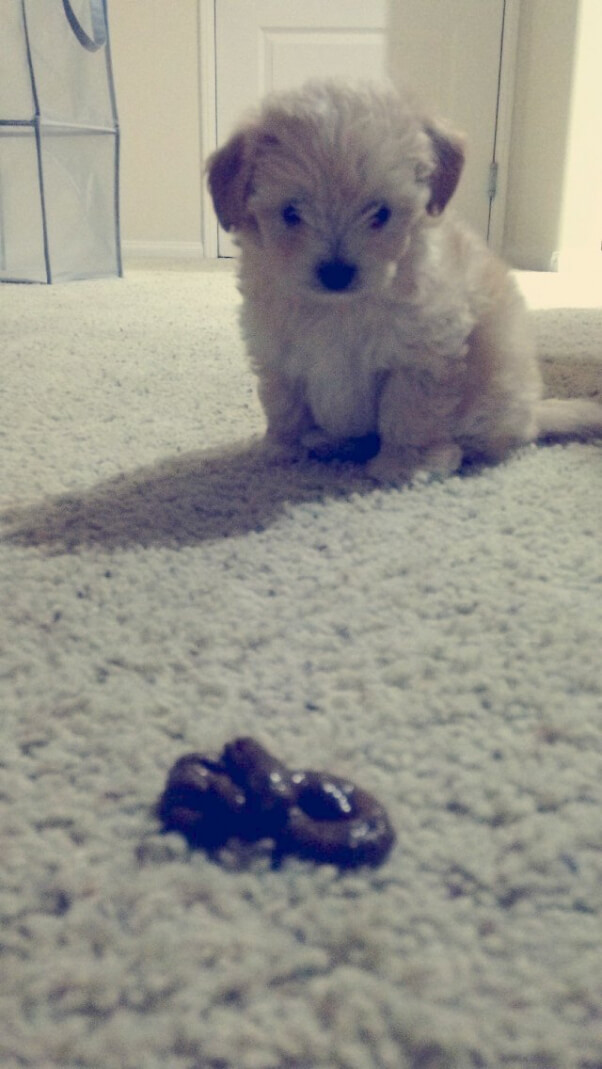
Yes, it’s normal to have to housetrain little Fluffy, but if she also starts to show signs of distress while you’re getting ready to leave (e.g., barking, panting, agitation), the underlying cause of the accidents may be anxiety. But it could also be a health problem, so a trip to the vet is in order—you’ll want to rule out incontinence, for sure. And be warned: Puppies can’t hold it, so don’t expect them to. Take them outside often!
Barking and howling
Your heart will break every time you hear your furry baby start crying or howling once you’ve closed the door behind you. But don’t worry—there is a solution. Read on.
Chewing, digging, and destroying EVERYTHING
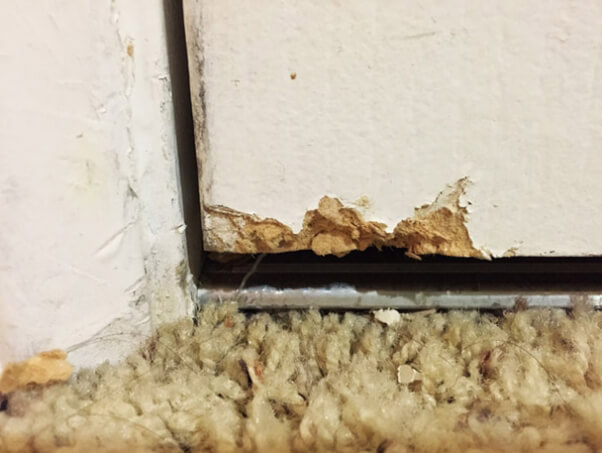
If Fido is gnawing on things that aren’t safe for consumption when you’re not at home, he might be showing symptoms of separation anxiety. Jovie often chewed on the door in an attempt to escape before I understood that she needed help. Dogs with severe cases of separation anxiety have been known to chew through drywall. This kind of anxiety can result in self-injury, so be sure to monitor Fido’s behavior closely.
Pacing
This isn’t obvious because your dog won’t necessarily pace when you’re around. But often, anxiety-sufferers will trace the same path, back and forth or in a circle, over and over, until you come home. My roommate was able to catch Jovie pacing from the front door to my bed and back. If you suspect that your pup might be exhibiting this behavior, set up a webcam the next time you leave to find out for sure.
Loss of appetite
Sometimes, it can be hard to pinpoint the cause of this. Of course, before assuming that your dog is suffering from separation anxiety, a trip to the vet is warranted to check for any physical problems. Once Fluffy has a clean bill of physical health, you can talk to your vet about her mental health.
So, is your dog experiencing any of the above? If so, you might be dealing with separation anxiety. You’ll want to start counter-conditioning the way Princess perceives your absence right away. When you leave, give her a special treat (try stuffing a Kong toy with something tasty) and some other chew toys, and leave some classical music on. If her anxiety is mild, she’ll be too busy working on her “projects” to miss you (hopefully). However, if she’s anything like Jovie and has a harder time dealing with your absences, read on, my friend.
How to Desensitize and Counter-Condition Your Anxious Furry Child
Here’s the cardinal rule: NEVER use fear to train your dog. Instead use positive reinforcement to make your pup feel more comfortable.
Exercise
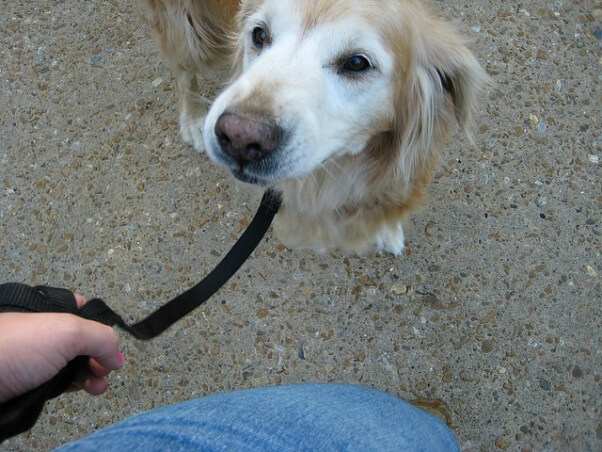
Make sure your pup is getting enough exercise. A tired dog is a well-behaved dog—that’s because tired dogs just want to sleep! A healthy dog (even a little one) needs at least an hour of exercise, including four walks, per day. Playing fetch is another good way to tire Fido out. Give him a solid hour of exercise before you leave so that he’ll be too tired to get worked up during your absence.
Predeparture Routine
If Fluffy starts following you around and getting worked up while you’re preparing to leave, it’s time to desensitize her to your routine. Try this: Go through your normal routine—tie your shoes, put on your coat, pick up your keys, etc.—and then just sit down and watch TV or go online for a while. Do this at times when you don’t need to leave the house and often enough that she gets bored with it. Soon, she won’t associate your jingling keys with your departure. When you do have to leave, make sure that your farewell and return greeting are business-like and brisk, without any emotional overtones. And when you get home, wait for her to calm down before you start loving on her. This can be hard to do, but it’s very important for dogs with separation anxiety. The idea is to reward calmness so there will be more of it!
Fake Absences
After Fido no longer gets anxious about your predeparture routine, you can try faking an absence by having him stay in a room, grabbing your bag and keys, and walking just out of sight. The goal is to plan your fake-out time to be shorter than the time it takes for him to get upset. Make sure that he’s totally calm before you try another fake-out, and then gradually increase the length of time that you’re out of sight each time he remains calm during your absence. Once he can handle 40 minutes alone in a room (with treats and toys, of course), then he can probably handle several hours without a problem.
Thundershirts
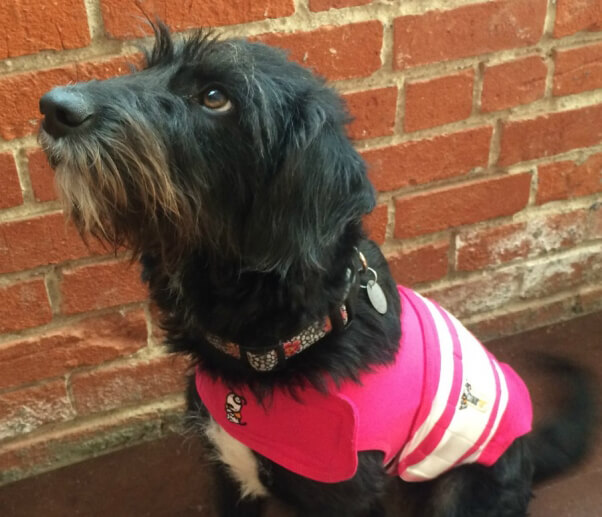
These snug garments act like a long-lasting “hug,” providing dogs with a sense of security. Do they make these for humans? I wish. But you can easily find them for dogs (and cats!) at your local vet’s office or pet-supply store or through our PETA Catalog online.
Homeopathic and Herbal Calming Remedies
There are many different natural calming supplements for dogs available at any pet-supply store. The trick is to find the one that works best for your dog, so it might take a little while to find the right one. The first few days or weeks that Fluffy is in your care might be stressful for her—after all, she has to get used to a new environment, new food, and lots of other things. These gentle products will naturally calm her and can be a helpful adjunct to all your other anxiety-easing efforts. They’re great to use while traveling with her, too!

Practicing all of the above with consistency will do wonders for your shelter dog, who needs to learn that being alone isn’t something to be scared of—and it isn’t forever.
After two months of training, Jovie is no longer chewing on the door, howling, whimpering, or freaking out when I leave home. Things have gotten much better—but she’s a work in progress, as she still tries to block my exit when I need to leave. Did I mention that this was going to take some time and effort?
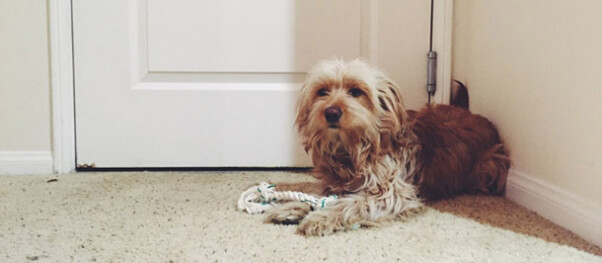
Here’s the thing, though: I saved her life, and she isn’t going to forget that anytime soon. It’ll take patience, thoughtful behavior training, and consistency to prove to her that I’m in it for the long haul—but she knows that I’ve got her back. I hope someday soon, she’ll realize that it’s for good.
Pledge never to buy any animal—adopt instead!
Text VEG to 73822 to get the latest vegan lifestyle tips, recipes, and urgent action alerts texted right to your phone.
Terms for automated texts/calls from PETA: https://peta.vg/txt. Text STOP to end, HELP for more info. Msg/data rates may apply. U.S. only.

